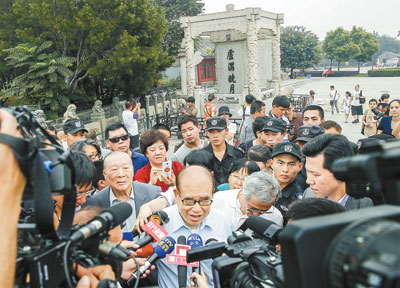
PRESIDENT Xi Jinping yesterday underscored the intractability of history as the nation commemorated the start of the War of Resistance Against Japanese Aggression 77 years ago.
“History is history and facts are facts. Nobody can change history and facts,” Xi said when addressing a crowd of over 1,000 people at the Museum of the War of the Chinese People’s Resistance Against Japanese Aggression in the outskirts of Beijing.
The war started in 1937 and ended with Japan’s World War II defeat in 1945.
“There are still a small number of people who ignore the iron facts of history,” Xi said. “Anyone who intends to deny, distort or beautify history will not find agreement among Chinese people and people of all other countries.”
Flanked by aging war veterans and young students, Xi unveiled a sculpture marking the start of the conflict and praised the resistance of all sectors of Chinese society against Japan’s “barbaric invasion” aimed at “annexing” China.
The sculpture is based on a military medal designed for veteran soldiers who fought in the war from 1937 to 1945.
Xi’s remarks came after Japan’s reinterpretation of its pacifist Constitution last week.
Japanese Prime Minister Shinzo Abe’s Cabinet endorsed a reinterpretation of its pacifist Constitution on July 1 for the right to collective self-defense, fueling concerns over Japan’s return to its past militarism.
Japan invaded Northeast China in September 1931. But historians agree that Japan’s full-scale invasion started July 7, 1937, when a crucial access point to Beijing, Lugou Bridge, was attacked by Japanese troops.
Around 35 million Chinese soldiers and civilians were killed or injured by Japanese troops during the war from 1937 to 45, with at least 300,000 people slaughtered in the Nanjing Massacre alone.
(Xinhua)
|

